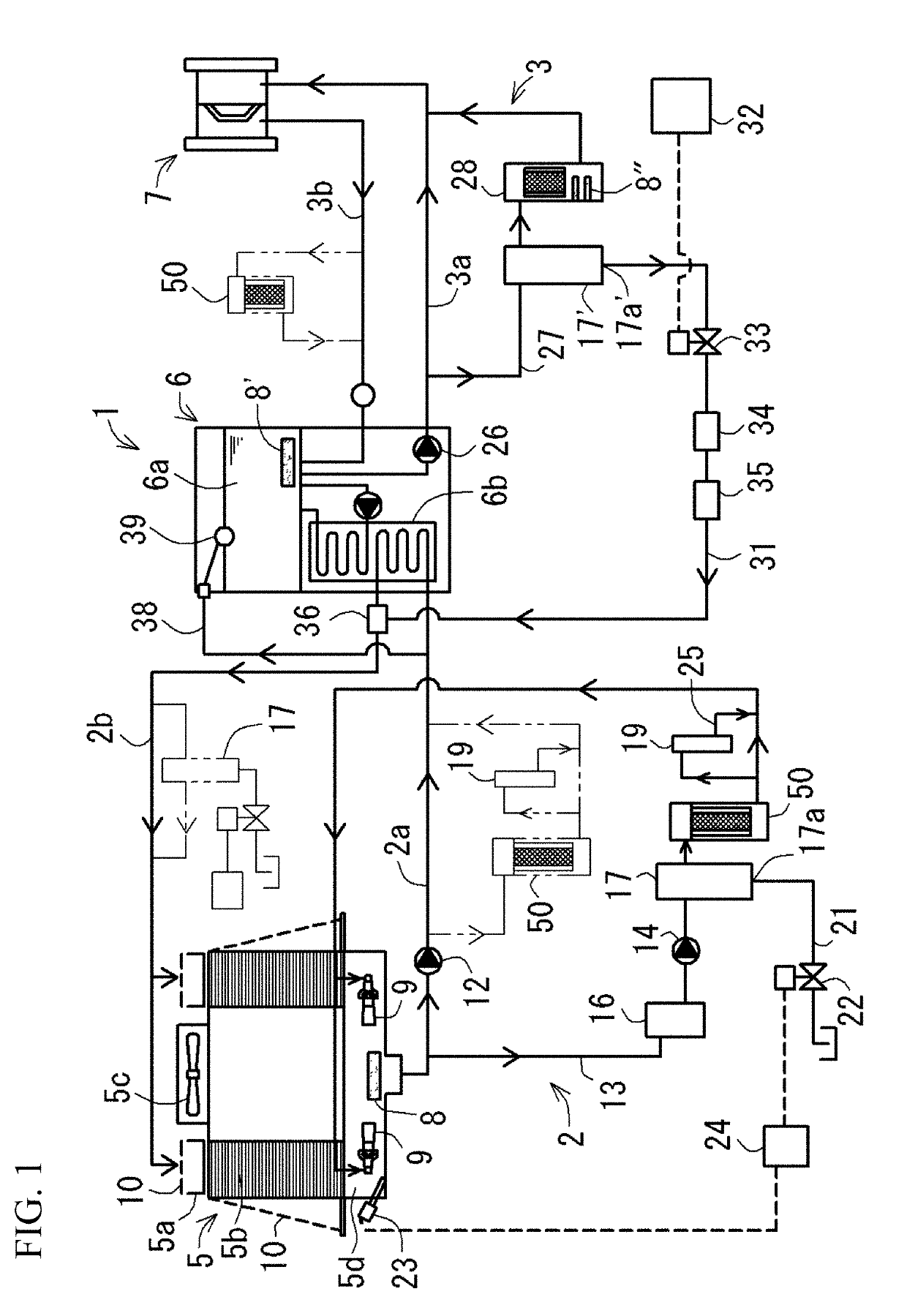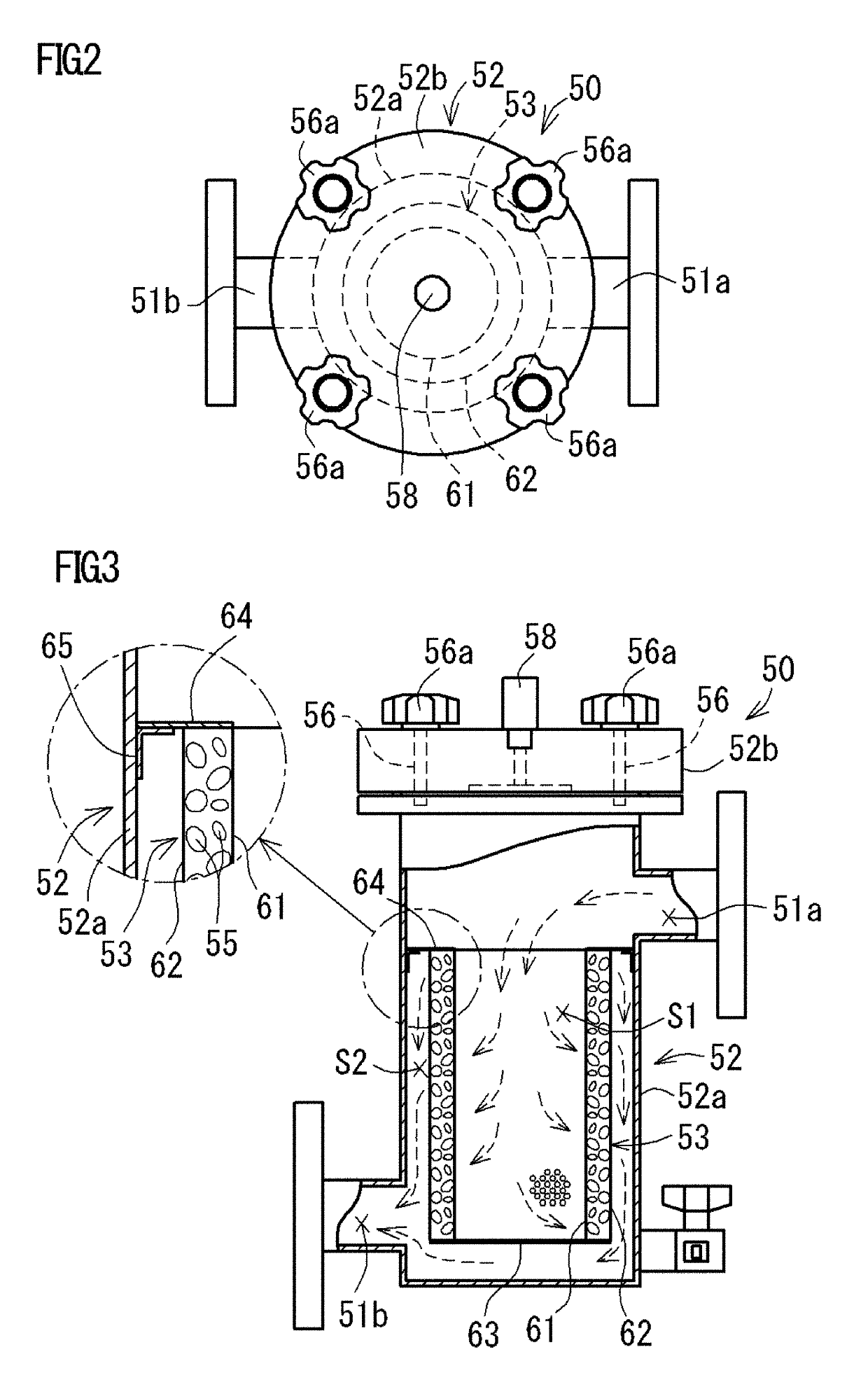Tourmaline treatment device and cooling water circulation system including same
- Summary
- Abstract
- Description
- Claims
- Application Information
AI Technical Summary
Benefits of technology
Problems solved by technology
Method used
Image
Examples
example
[0063]Hereinafter, the present invention will be described in detail using an example with reference to the drawings.
[0064](1) Configuration of Cooling Water Circulation System
[0065]As illustrated in FIG. 1, a cooling water circulation system 1 according to the present example circulates cooling water in a circulation path, and includes a tourmaline treatment device 50 described below. The circulation path includes a cooling-tower-side circulation path 2 for circulating the cooling water between a cooling tower 5 and a chiller machine 6, and a chiller-machine-side circulation path 3 for circulating the cooling water between a chiller machine 6 and a cooling target part 7. Examples of the cooling target part 7 include an injection molding device, a press working device, a welding device, a heating device, a trimming device, and the like.
[0066]The cooling tower 5 includes a water sprinkling tank 5a for storing and sprinkling cooling water increased in temperature fed from the chiller ...
PUM
 Login to View More
Login to View More Abstract
Description
Claims
Application Information
 Login to View More
Login to View More - R&D
- Intellectual Property
- Life Sciences
- Materials
- Tech Scout
- Unparalleled Data Quality
- Higher Quality Content
- 60% Fewer Hallucinations
Browse by: Latest US Patents, China's latest patents, Technical Efficacy Thesaurus, Application Domain, Technology Topic, Popular Technical Reports.
© 2025 PatSnap. All rights reserved.Legal|Privacy policy|Modern Slavery Act Transparency Statement|Sitemap|About US| Contact US: help@patsnap.com



